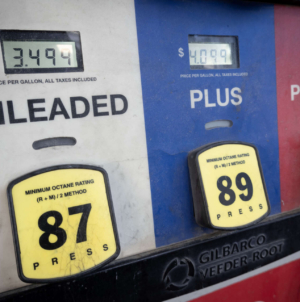-
Fox News Entertainment Newsletter: Tom Hanks addresses daughter’s allegations, Keith Urban’s sobriety journey - 5 mins ago
-
World Cup qualifying: Haaland leads Norway to its first win vs. Italy in 25 years - 9 mins ago
-
One Million Drivers Told To Avoid Gas Stations - 21 mins ago
-
Jason Biggs opens up about desperate cocaine use at height of fame - 49 mins ago
-
Vikings’ Kevin O’Connell Speaks Out About Rumored Aaron Rodgers Interest - 60 mins ago
-
Diamondbacks RHP Corbin Burnes will undergo Tommy John surgery - 2 hours ago
-
How to Watch Andorra vs England: Live Stream FIFA World Cup Qualifiers, TV Channel - 2 hours ago
-
DMV scam texts target drivers in 14 states with fake penalty threats - 2 hours ago
-
2025 Vikings game-by-game predictions: Will J.J. McCarthy prove to be right QB move? - 2 hours ago
-
Woman Buys 1963 Wedding Dress for $5 at Estate Sale—but There’s a Twist - 2 hours ago
US iPhone Imports From India Soar as Trump Threatens 25% Tariff on Apple
Apple increased its exports of iPhones from India to the United States in April, with industry data showing a 76 percent increase compared to previous months.
The jump came amid President Donald Trump’s threats of a 25 percent tariff on iPhones made outside the U.S., as he urged the company to move its manufacturing operations back to American soil.
Why It Matters
Upon returning to office in January, Trump announced sweeping tariffs on various industries and major U.S. trading partners, actions he has deemed necessary to revive American manufacturing.
For American consumers, tariffs on Apple are likely to affect the pricing and availability of iPhones. Analysts have warned that new tariffs—if imposed—could drive up U.S. iPhone prices by hundreds or even thousands of dollars. The company’s sourcing from India, meanwhile, signals lasting shifts in the global tech supply chain.
What To Know
Apple has airlifted about 1.5 million iPhones, weighing some 600 tons, from India to the United States since March, Reuters reported.
The move was meant to preempt and mitigate the effects of the Trump administration’s planned tariffs on foreign-produced iPhones. Six cargo planes, each with about 100 tons of capacity, transported the devices.
U.S. customs data from the first two months of the year also showed Foxconn shipments of iPhones from India to the U.S. soaring to $770 million in January and $643 million in February, an increase from the $110 million to $331 million range seen in the four months prior.
In April, the U.S. government announced a 90-day pause on the 26 percent tariff for iPhones imported from India.
On May 23, Trump said Apple should make iPhones in the United States if it wanted to avoid a 25 percent import tariff on devices manufactured abroad. He told Apple CEO Tim Cook that only domestically produced iPhones should avoid levies, explicitly calling out the company’s increased reliance on Indian manufacturing.
India’s position in Apple’s supply chain has grown rapidly. Counterpoint Research estimated that about 20 percent of iPhones imported to the U.S. originated from India, primarily from Foxconn and Tata plants in Chennai, with additional facilities under construction.
Apple ramped up production in India by increasing factory headcount and extending working hours, including Sunday shifts at key facilities. The company’s push included lobbying Indian authorities to expedite customs processes, resulting in reduced clearance times at Chennai airports.
Industry analysts have said relocating iPhone manufacturing to the U.S. would be prohibitively expensive and complex. Dan Ives, an analyst with Wedbush Securities, said shifting all production to the U.S. could push retail prices to as much as $3,500 per unit and would likely take several years to implement, if at all feasible.
What People Are Saying
President Donald Trump wrote on Truth Social on Friday: “I have long ago informed Tim Cook of Apple that I expect their iPhones that will be sold in the United States of America will be manufactured and built in the United States, not India, or anyplace else. If that is not the case, a Tariff of at least 25 percent must be paid by Apple to the U.S.”
Dan Ives, an analyst at Wedbush Securities, said in a note to investors in April: “If consumers want a $3,500 iPhone we should make them in New Jersey or Texas or another state.”
What Happens Next
Apple has announced investments in U.S. data centers and hiring but not in large-scale domestic iPhone production.
The company is expected to continue scaling its Indian production and logistics to meet U.S. demand while monitoring the evolving tariff policies. Any implementation or extension of tariffs could force further changes to the company’s global supply chain and U.S. product pricing through the remainder of 2025.

AP
Source link






























